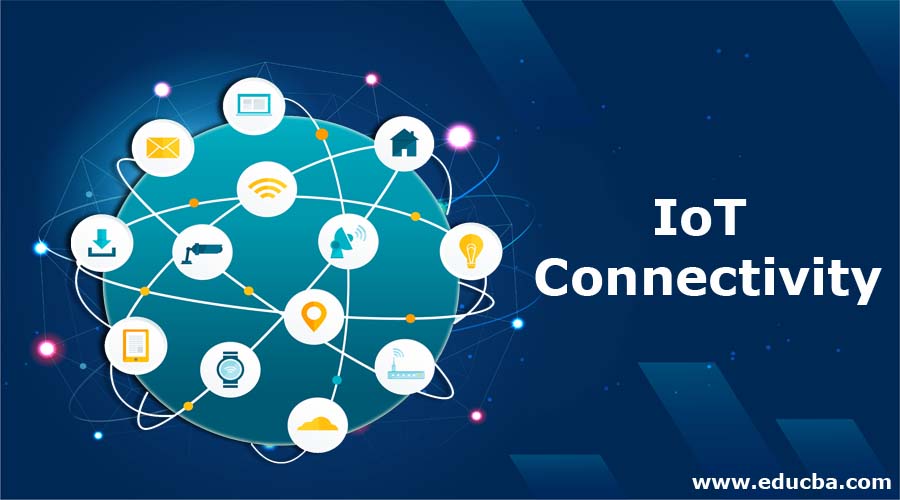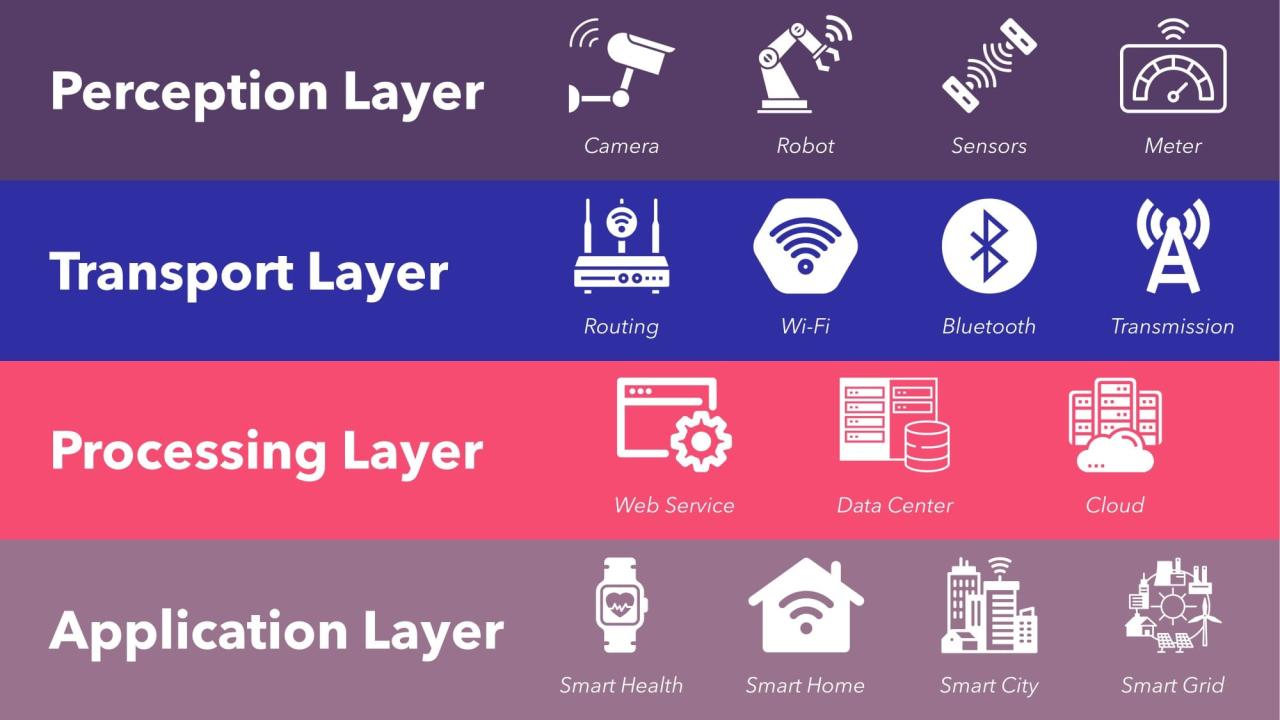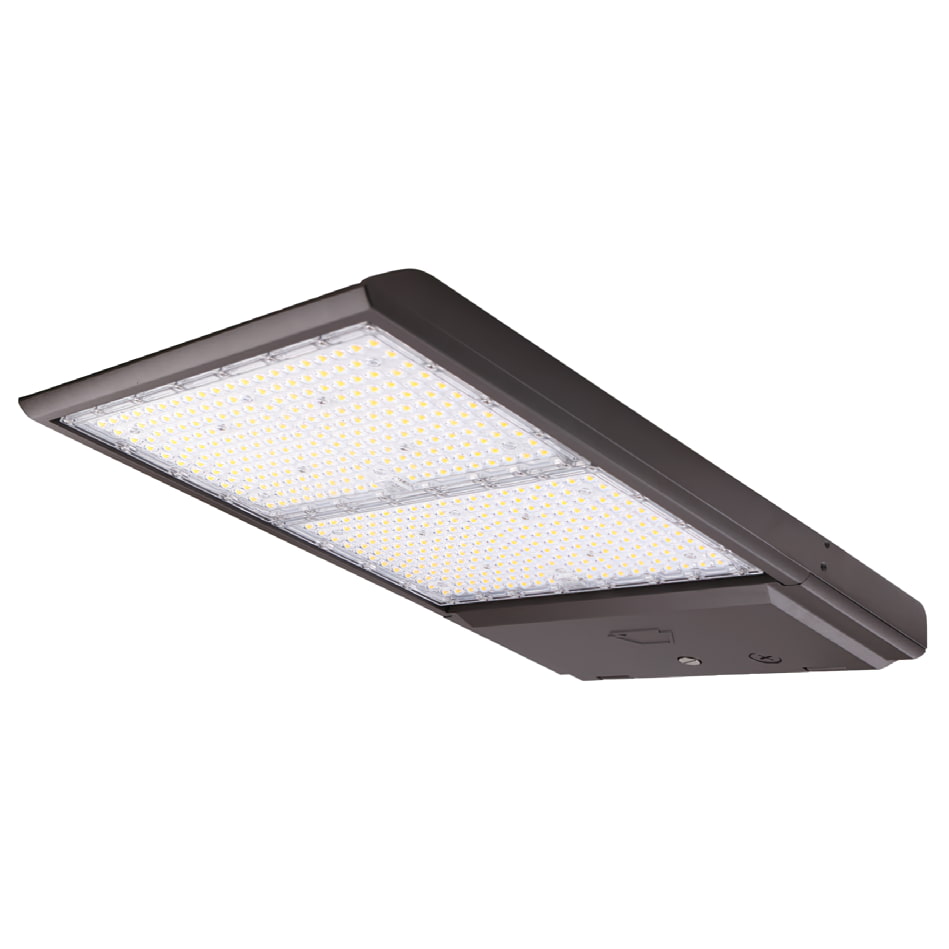IoT Connectivity Technologies: Bridging the Digital Divide
IoT Connectivity Technologies are the invisible threads that weave together the interconnected world we live in. From smart homes to industrial automation, these technologies enable seamless communication between devices, driving […]

IoT Connectivity Technologies are the invisible threads that weave together the interconnected world we live in. From smart homes to industrial automation, these technologies enable seamless communication between devices, driving innovation and transforming industries. This exploration delves into the diverse landscape of wired and wireless connectivity options, exploring their unique strengths, limitations, and real-world applications.
The significance of IoT connectivity lies in its ability to bridge the physical and digital worlds. By connecting devices, sensors, and systems, it unlocks a wealth of possibilities for data collection, analysis, and automation. However, challenges such as security, scalability, and interoperability must be addressed to ensure the successful adoption and integration of IoT technologies.
Wired Connectivity Technologies
Wired connectivity technologies offer a reliable and robust way to connect IoT devices, particularly in scenarios demanding high bandwidth, low latency, and secure communication. These technologies leverage physical cables to transmit data, ensuring a consistent and predictable connection.
Ethernet
Ethernet is a widely adopted wired networking standard that provides high-speed data transmission over twisted-pair copper cables. In IoT deployments, Ethernet offers several advantages:
- High Bandwidth: Ethernet supports data transfer rates up to 10 Gbps, making it suitable for applications requiring large data volumes, such as video streaming or industrial automation.
- Low Latency: The wired nature of Ethernet minimizes signal interference and delays, resulting in low latency communication, crucial for real-time applications like remote control or sensor data acquisition.
- Scalability: Ethernet networks can be easily expanded by adding more devices and switches, making them suitable for large-scale IoT deployments.
- Security: Ethernet networks can be secured using various protocols like VLANs and firewalls, protecting sensitive data from unauthorized access.
Ethernet is commonly used in industrial IoT (IIoT) environments, smart homes, and building automation systems.
Powerline Communication (PLC)
Powerline communication (PLC) utilizes existing electrical wiring infrastructure for data transmission. This technology leverages the power lines as a communication medium, eliminating the need for additional cabling.
- Cost-Effective: PLC eliminates the cost of installing new cabling, making it a cost-effective option for connecting IoT devices in existing buildings or infrastructure.
- Wide Coverage: PLC signals can travel through the electrical wiring throughout a building or even across multiple buildings, providing extensive coverage for IoT devices.
However, PLC also presents certain disadvantages:
- Limited Bandwidth: PLC typically offers lower bandwidth compared to Ethernet, making it less suitable for applications requiring high data transfer rates.
- Interference: PLC signals can be affected by electrical noise and interference from other devices connected to the power grid, leading to unreliable communication.
- Security Concerns: PLC networks can be susceptible to security breaches due to the open nature of the power grid.
PLC is often used in smart metering applications, home automation systems, and for connecting devices in hard-to-reach locations.
Coaxial Cable vs. Fiber Optic Cable
Coaxial cable and fiber optic cable are two types of wired communication technologies used in various applications.
- Coaxial Cable: Coaxial cable consists of a central conductor surrounded by an insulator and a braided shield. It offers good bandwidth and signal integrity, but is susceptible to interference and has a limited range.
- Fiber Optic Cable: Fiber optic cable transmits data as light pulses through thin strands of glass or plastic. It offers high bandwidth, low latency, and immunity to electromagnetic interference. However, fiber optic cables are more expensive and require specialized equipment for installation and maintenance.
In IoT scenarios, coaxial cable is typically used for short-range applications, such as connecting sensors to a central hub. Fiber optic cable is preferred for long-distance and high-bandwidth applications, such as connecting remote sensors or cameras to a central control system.
Wireless Connectivity Technologies

Wireless connectivity plays a crucial role in the Internet of Things (IoT), enabling communication between devices without the need for physical cables. Several wireless protocols have emerged to cater to the diverse needs of IoT applications, each with its unique characteristics and strengths.
Overview of Wireless Protocols
Wireless protocols are the backbone of communication in the IoT, enabling seamless data exchange between devices. These protocols differ in their range, bandwidth, power consumption, and security features, making them suitable for specific applications.
- Wi-Fi (IEEE 802.11): A widely used protocol for high-speed data transfer over short distances, commonly used in homes, offices, and public spaces.
- Bluetooth: A low-power, short-range protocol for connecting devices like smartphones, wearables, and smart home appliances.
- Zigbee: A low-power, mesh networking protocol for home automation and industrial applications, known for its long battery life and reliable communication.
- Z-Wave: A low-power, mesh networking protocol primarily used for home automation, focusing on interoperability and security.
- LoRaWAN: A long-range, low-power wide-area network (LPWAN) protocol ideal for applications like smart metering, asset tracking, and environmental monitoring.
- NB-IoT (Narrowband IoT): A cellular-based LPWAN protocol designed for low-bandwidth, low-power applications, particularly suitable for smart city and industrial IoT deployments.
Wi-Fi
Wi-Fi, based on the IEEE 802.11 standard, is a popular wireless protocol known for its high data transfer rates and wide range. It utilizes the 2.4 GHz and 5 GHz frequency bands, offering flexibility in choosing the best signal strength and minimizing interference.
Key Features of Wi-Fi
- High Data Rates: Wi-Fi supports data transfer rates ranging from a few Mbps to several Gbps, depending on the standard and network conditions.
- Wide Range: Wi-Fi can cover a considerable distance, typically up to 100 meters indoors and even farther outdoors, making it suitable for various applications.
- Ubiquitous Availability: Wi-Fi infrastructure is widely available in homes, offices, public spaces, and even on public transportation, ensuring easy access for IoT devices.
- Security: Wi-Fi offers robust security features, including WPA2 and WPA3 encryption, to protect data transmission from unauthorized access.
Strengths of Wi-Fi
- High Bandwidth: Wi-Fi’s high bandwidth is ideal for applications requiring large data transfers, such as streaming video or downloading large files.
- Established Ecosystem: Wi-Fi enjoys a well-established ecosystem with a wide range of compatible devices, simplifying integration for IoT applications.
- Low Cost: Wi-Fi routers and adapters are relatively inexpensive, making it an affordable option for connecting IoT devices.
Weaknesses of Wi-Fi
- High Power Consumption: Wi-Fi devices consume more power than some other wireless protocols, potentially impacting battery life in battery-powered devices.
- Limited Range in Certain Environments: While Wi-Fi has a wide range, its performance can be affected by obstacles like walls and other electronic devices, potentially limiting its range in certain environments.
- Security Concerns: Despite security features, Wi-Fi networks can be vulnerable to attacks if not properly configured and secured.
Real-World Applications of Wi-Fi
- Smart Home: Wi-Fi is widely used in smart homes to connect devices like smart speakers, security cameras, and smart appliances.
- Industrial Automation: Wi-Fi is used in industrial settings for data acquisition, remote control, and machine-to-machine communication.
- Public Wi-Fi: Wi-Fi hotspots are ubiquitous in public spaces like airports, cafes, and libraries, providing internet access to various devices, including IoT devices.
Bluetooth
Bluetooth, a short-range wireless protocol, is known for its low power consumption and ease of use. It operates in the 2.4 GHz frequency band and is widely used for connecting devices like smartphones, laptops, wearables, and smart home appliances.
Key Features of Bluetooth
- Low Power Consumption: Bluetooth is designed for low-power operation, making it suitable for battery-powered devices with limited power resources.
- Short Range: Bluetooth has a limited range, typically up to 10 meters, ideal for connecting devices in close proximity.
- Simple Pairing: Bluetooth devices can be easily paired with each other, simplifying the connection process.
- Security: Bluetooth offers basic security features, including encryption, to protect data transmission.
Strengths of Bluetooth
- Low Power Consumption: Bluetooth’s low power consumption is ideal for battery-powered devices, extending their battery life.
- Ease of Use: Bluetooth’s simple pairing process makes it easy to connect devices without complex configurations.
- Wide Compatibility: Bluetooth is widely supported by various devices, ensuring compatibility with a broad range of IoT devices.
Weaknesses of Bluetooth
- Limited Range: Bluetooth’s short range can be a limitation in applications requiring communication over longer distances.
- Limited Bandwidth: Bluetooth has a limited bandwidth, making it unsuitable for applications requiring high data transfer rates.
- Security Concerns: While Bluetooth offers basic security features, it can be vulnerable to attacks, particularly in public environments.
Real-World Applications of Bluetooth
- Smart Home: Bluetooth is used in smart homes to connect devices like smart speakers, smart locks, and smart lighting.
- Wearables: Bluetooth is widely used in wearables like smartwatches and fitness trackers to connect to smartphones and collect data.
- Healthcare: Bluetooth is used in healthcare applications for connecting medical devices like blood glucose monitors and heart rate monitors to smartphones.
Zigbee
Zigbee, a low-power, mesh networking protocol, is designed for home automation and industrial applications. It operates in the 2.4 GHz frequency band and is known for its long battery life, reliable communication, and scalability.
Key Features of Zigbee
- Low Power Consumption: Zigbee devices are designed for low-power operation, extending battery life for battery-powered devices.
- Mesh Networking: Zigbee uses a mesh network topology, where devices can communicate with each other directly or through other devices in the network, enhancing reliability and range.
- Security: Zigbee offers robust security features, including encryption and authentication, to protect data transmission.
- Interoperability: Zigbee is a standardized protocol, ensuring interoperability between devices from different manufacturers.
Strengths of Zigbee
- Long Battery Life: Zigbee’s low power consumption extends battery life, making it suitable for battery-powered devices in remote locations.
- Reliable Communication: Zigbee’s mesh networking topology enhances communication reliability, even in challenging environments with obstacles.
- Scalability: Zigbee networks can support a large number of devices, making it suitable for large-scale deployments.
Weaknesses of Zigbee
- Limited Bandwidth: Zigbee has a limited bandwidth, making it unsuitable for applications requiring high data transfer rates.
- Higher Cost: Zigbee devices can be more expensive than some other wireless protocols.
- Limited Range: Zigbee’s range is typically shorter than Wi-Fi, making it less suitable for applications requiring long-distance communication.
Real-World Applications of Zigbee
- Smart Home: Zigbee is widely used in smart homes to connect devices like smart lights, thermostats, and door locks.
- Industrial Automation: Zigbee is used in industrial settings for data acquisition, remote control, and sensor networks.
- Building Automation: Zigbee is used in building automation systems for controlling lighting, HVAC, and security systems.
Z-Wave
Z-Wave, a low-power, mesh networking protocol, is primarily used for home automation applications. It operates in the 908.42 MHz frequency band and focuses on interoperability and security.
Key Features of Z-Wave
- Low Power Consumption: Z-Wave devices are designed for low-power operation, extending battery life for battery-powered devices.
- Mesh Networking: Z-Wave uses a mesh network topology, enhancing communication reliability and range.
- Interoperability: Z-Wave is a standardized protocol, ensuring interoperability between devices from different manufacturers.
- Security: Z-Wave offers robust security features, including encryption and authentication, to protect data transmission.
Strengths of Z-Wave
- Strong Security: Z-Wave’s robust security features make it a secure option for home automation applications.
- Interoperability: Z-Wave’s focus on interoperability ensures compatibility with a wide range of devices from different manufacturers.
- Low Power Consumption: Z-Wave’s low power consumption extends battery life for battery-powered devices.
Weaknesses of Z-Wave
- Limited Bandwidth: Z-Wave has a limited bandwidth, making it unsuitable for applications requiring high data transfer rates.
- Limited Range: Z-Wave’s range is typically shorter than Wi-Fi, making it less suitable for applications requiring long-distance communication.
- Higher Cost: Z-Wave devices can be more expensive than some other wireless protocols.
Real-World Applications of Z-Wave
- Smart Home: Z-Wave is widely used in smart homes to connect devices like smart lights, thermostats, and door locks.
- Home Security: Z-Wave is used in home security systems for controlling alarms, sensors, and other security devices.
- Home Automation: Z-Wave is used in home automation systems for controlling appliances, lighting, and other devices.
LoRaWAN
LoRaWAN (Long Range Wide Area Network) is a long-range, low-power wide-area network (LPWAN) protocol designed for applications requiring long-distance communication and low power consumption. It operates in the unlicensed 868 MHz and 915 MHz frequency bands, making it ideal for applications like smart metering, asset tracking, and environmental monitoring.
Key Features of LoRaWAN
- Long Range: LoRaWAN has a long range, typically up to 15 kilometers in rural areas and several kilometers in urban areas, making it suitable for applications requiring communication over large distances.
- Low Power Consumption: LoRaWAN devices are designed for low-power operation, extending battery life for battery-powered devices.
- Scalability: LoRaWAN networks can support a large number of devices, making it suitable for large-scale deployments.
- Security: LoRaWAN offers robust security features, including encryption and authentication, to protect data transmission.
Strengths of LoRaWAN
- Long Range: LoRaWAN’s long range makes it ideal for applications requiring communication over large distances, such as smart metering and asset tracking.
- Low Power Consumption: LoRaWAN’s low power consumption extends battery life for battery-powered devices, making it suitable for applications requiring long-term operation.
- Scalability: LoRaWAN’s scalability allows for large-scale deployments with a large number of devices.
Weaknesses of LoRaWAN
- Limited Bandwidth: LoRaWAN has a limited bandwidth, making it unsuitable for applications requiring high data transfer rates.
- Limited Throughput: LoRaWAN’s limited bandwidth can result in lower data throughput, making it unsuitable for applications requiring real-time data transfer.
- Higher Cost: LoRaWAN devices and infrastructure can be more expensive than some other wireless protocols.
Real-World Applications of LoRaWAN
- Smart Metering: LoRaWAN is widely used in smart metering applications for collecting data from water, gas, and electricity meters.
- Asset Tracking: LoRaWAN is used for tracking assets like containers, vehicles, and equipment, providing real-time location information.
- Environmental Monitoring: LoRaWAN is used in environmental monitoring applications for collecting data from sensors measuring temperature, humidity, and other environmental parameters.
NB-IoT (Narrowband IoT), Iot connectivity technologies
NB-IoT (Narrowband IoT) is a cellular-based LPWAN protocol designed for low-bandwidth, low-power applications. It operates on licensed cellular networks, offering wide coverage and high penetration.
Key Features of NB-IoT
- Low Power Consumption: NB-IoT devices are designed for low-power operation, extending battery life for battery-powered devices.
- Wide Coverage: NB-IoT utilizes existing cellular networks, providing wide coverage and high penetration.
- Deep Indoor Penetration: NB-IoT signals can penetrate walls and other obstacles, ensuring connectivity even in challenging environments.
- Security: NB-IoT offers robust security features, including encryption and authentication, to protect data transmission.
Strengths of NB-IoT
- Wide Coverage: NB-IoT’s wide coverage, leveraging existing cellular networks, makes it suitable for applications requiring ubiquitous connectivity.
- Deep Indoor Penetration: NB-IoT’s ability to penetrate obstacles ensures connectivity even in challenging environments like buildings and underground facilities.
- Low Power Consumption: NB-IoT’s low power consumption extends battery life for battery-powered devices, making it suitable for applications requiring long-term operation.
Weaknesses of NB-IoT
- Limited Bandwidth: NB-IoT has a limited bandwidth, making it unsuitable for applications requiring high data transfer rates.
- Higher Cost: NB-IoT devices and infrastructure can be more expensive than some other wireless protocols.
- Dependence on Cellular Networks: NB-IoT relies on cellular networks for connectivity, which can limit its deployment in areas with limited cellular coverage.
Real-World Applications of NB-IoT
- Smart Metering: NB-IoT is used in smart metering applications for collecting data from water, gas, and electricity meters.
- Smart City: NB-IoT is used in smart city applications for managing street lighting, parking, and traffic flow.
- Industrial IoT: NB-IoT is used in industrial IoT applications for monitoring equipment, sensors, and other industrial assets.
Cellular Connectivity for IoT

Cellular networks play a crucial role in connecting IoT devices to the internet, enabling communication and data exchange across vast distances. These networks, based on technologies like GSM, LTE, and 5G, provide a reliable and ubiquitous infrastructure for IoT deployments.
Advantages of Cellular Connectivity for IoT
Cellular networks offer several advantages for IoT applications:
- Wide Coverage: Cellular networks boast extensive geographical coverage, making them suitable for deploying IoT devices in remote or sparsely populated areas.
- Reliable Connectivity: Cellular networks provide a robust and reliable connection, ensuring consistent data transmission even in challenging environments.
- High Bandwidth: Advanced cellular technologies like LTE and 5G offer high bandwidth capabilities, supporting the transmission of large data volumes required by demanding IoT applications.
- Power Efficiency: Cellular networks employ power-efficient communication protocols, extending the battery life of IoT devices.
- Security: Cellular networks incorporate robust security measures, protecting sensitive data transmitted by IoT devices.
Disadvantages of Cellular Connectivity for IoT
While cellular networks offer numerous benefits, they also have certain drawbacks:
- Cost: Cellular data plans can be expensive, especially for large-scale IoT deployments with a high number of devices.
- Latency: Cellular networks can experience latency, which can be a concern for real-time applications requiring low response times.
- Power Consumption: Although power-efficient, cellular communication can still consume significant power, impacting the battery life of devices.
- Network Congestion: During peak hours or in densely populated areas, cellular networks can experience congestion, leading to slower data speeds.
Emerging Technologies and Trends in Cellular Connectivity for IoT
The IoT landscape is constantly evolving, with emerging technologies and trends shaping the future of cellular connectivity:
- eSIMs: Embedded SIMs (eSIMs) allow IoT devices to connect to multiple cellular networks without requiring physical SIM cards. This offers flexibility and simplifies device management.
- LPWA: Low-Power Wide-Area (LPWA) technologies, such as NB-IoT and LTE-M, are specifically designed for low-power, long-range IoT applications. These technologies provide extended battery life, cost-effectiveness, and reliable connectivity for devices operating in challenging environments.
- 5G: The advent of 5G technology brings significant improvements in speed, latency, and capacity, enabling new possibilities for IoT applications. 5G networks can support a massive number of connected devices, facilitating the development of smart cities, industrial automation, and other advanced IoT solutions.
Satellite Connectivity for IoT
Satellite communication is a vital tool for connecting remote IoT devices, especially in areas with limited or no terrestrial network coverage. These devices can be found in various locations, such as remote sensors in agriculture, environmental monitoring stations in harsh environments, and infrastructure monitoring systems in remote regions.
Satellite Constellations for IoT
Satellite constellations are designed to provide continuous global coverage, enabling seamless communication for IoT devices. Different constellations offer unique advantages depending on the specific application requirements.
- Low Earth Orbit (LEO) Constellations: LEO constellations utilize satellites orbiting at lower altitudes (500-2000 km), resulting in lower latency and faster data transmission speeds. These constellations are ideal for applications demanding real-time data, such as asset tracking, remote sensing, and emergency response. Examples of LEO constellations include SpaceX’s Starlink, OneWeb, and Amazon’s Kuiper.
- Medium Earth Orbit (MEO) Constellations: MEO constellations operate at higher altitudes (2000-35,786 km), providing broader coverage than LEO constellations but with slightly higher latency. These constellations are well-suited for applications requiring reliable connectivity, such as maritime communication, aviation, and disaster relief. Examples include Iridium and Globalstar.
- Geostationary Earth Orbit (GEO) Constellations: GEO constellations utilize satellites positioned at a fixed point above the Earth’s equator, offering continuous coverage over specific regions. These constellations are commonly used for broadcasting, navigation, and weather forecasting, providing high bandwidth and reliable communication. Examples include Intelsat and Eutelsat.
Hybrid Connectivity Approaches
In the realm of IoT, hybrid connectivity emerges as a powerful strategy, combining multiple connectivity technologies to overcome the limitations of individual approaches and create robust, reliable, and adaptable solutions. This approach offers numerous advantages, including enhanced coverage, improved resilience, and the ability to optimize data transmission based on specific application requirements.
Examples of Hybrid Connectivity
Hybrid connectivity involves combining different connectivity technologies to achieve optimal performance and reliability for specific IoT applications. This approach leverages the strengths of each technology while mitigating their weaknesses. Here are some common examples:
- Wi-Fi and Bluetooth: This combination is ideal for smart home applications, where Wi-Fi provides high bandwidth for data-intensive tasks, while Bluetooth enables low-power communication with nearby devices, such as sensors and actuators.
- Cellular and LoRaWAN: This combination offers wide coverage and low power consumption, making it suitable for asset tracking and environmental monitoring applications. Cellular provides reliable connectivity in remote areas, while LoRaWAN handles large-scale deployments with minimal infrastructure requirements.
- Satellite and Cellular: This combination is particularly useful for applications in remote locations with limited or no terrestrial connectivity. Satellite provides global coverage, while cellular offers faster data speeds and lower latency when available.
Challenges and Considerations
Implementing hybrid connectivity strategies presents several challenges and considerations:
- Network Management: Managing multiple connectivity technologies can be complex, requiring robust network management systems to monitor, configure, and troubleshoot different networks.
- Interoperability: Ensuring seamless communication between different connectivity technologies is crucial for a smooth user experience. This requires careful consideration of protocols and standards.
- Cost and Complexity: Implementing hybrid connectivity can be more expensive than using a single technology. It also introduces additional complexity in terms of device design, software development, and deployment.
Hybrid connectivity offers a flexible and adaptable approach to IoT deployments, enabling organizations to optimize connectivity based on specific application requirements and environmental factors.
Emerging Connectivity Trends in IoT: Iot Connectivity Technologies
The Internet of Things (IoT) is rapidly evolving, driven by the increasing demand for connectivity and the emergence of new technologies. This evolution is shaping the future of IoT connectivity, pushing the boundaries of what is possible and creating exciting opportunities for innovation. This section explores some of the key emerging trends in IoT connectivity, focusing on their potential impact, challenges, and opportunities.
6G Connectivity
6G, the next generation of wireless technology, promises to revolutionize IoT connectivity by offering significantly enhanced capabilities compared to its predecessor, 5G. 6G is expected to deliver significantly faster speeds, lower latency, and higher capacity, paving the way for more sophisticated and interconnected IoT applications.
- Ultra-high Speeds: 6G is expected to achieve peak data rates of up to 1 terabit per second (Tbps), significantly exceeding the capabilities of 5G. This will enable the seamless transmission of large volumes of data, facilitating the deployment of complex IoT applications such as autonomous vehicles, smart cities, and industrial automation.
- Ultra-low Latency: 6G will offer ultra-low latency, reducing the time it takes for data to travel between devices. This is crucial for real-time applications like remote surgery, autonomous driving, and industrial control systems, where even a fraction of a second delay can have significant consequences.
- Enhanced Security: 6G will incorporate advanced security features to protect sensitive data and ensure the integrity of IoT networks. This is essential for addressing growing concerns about cybersecurity threats in the connected world.
- Massive Connectivity: 6G will enable the simultaneous connection of billions of devices, supporting the massive scale of IoT deployments. This will be critical for supporting the increasing demand for connectivity from smart homes, smart cities, and industrial environments.
Li-Fi
Li-Fi, short for Light Fidelity, is a wireless communication technology that utilizes visible light to transmit data. This technology offers several advantages over traditional Wi-Fi, including higher speeds, greater security, and potential for increased bandwidth.
- High Speed: Li-Fi can achieve data rates comparable to or even exceeding those of Wi-Fi, making it suitable for demanding IoT applications.
- Enhanced Security: Li-Fi is inherently more secure than Wi-Fi because it uses light, which cannot penetrate walls, making it difficult for unauthorized users to intercept data.
- Increased Bandwidth: Li-Fi can utilize the entire visible light spectrum, offering a significantly larger bandwidth compared to Wi-Fi. This allows for the simultaneous connection of more devices and the transmission of larger volumes of data.
- No Interference: Li-Fi does not interfere with radio frequency (RF) signals, making it ideal for use in environments where RF interference is a concern, such as hospitals and industrial facilities.
Mesh Networking
Mesh networking is a type of network topology where devices connect to each other in a distributed manner, creating a self-healing and resilient network. This approach offers several advantages for IoT connectivity, including increased coverage, improved reliability, and enhanced scalability.
- Extended Coverage: Mesh networks can extend the range of IoT connectivity by allowing devices to relay data through each other, eliminating the need for centralized infrastructure. This is particularly beneficial in areas with limited coverage, such as remote locations or dense urban environments.
- Enhanced Reliability: Mesh networks are highly resilient, as data can be transmitted through multiple paths, even if some devices fail. This ensures continuous connectivity and reduces the impact of network outages.
- Scalability: Mesh networks can easily scale to accommodate the increasing number of devices in IoT deployments. New devices can be added to the network without requiring significant infrastructure changes.
- Self-Healing: Mesh networks can automatically adapt to changes in the network topology, such as device failures or obstacles. This ensures that connectivity is maintained even in dynamic environments.
Conclusive Thoughts
As we venture further into the era of interconnectedness, the evolution of IoT connectivity technologies will continue to shape our lives. From the widespread adoption of 5G and satellite networks to the emergence of novel technologies like Li-Fi and mesh networking, the future holds exciting possibilities for seamless, secure, and ubiquitous connectivity. By understanding the diverse landscape of connectivity options and their unique strengths, we can unlock the full potential of the Internet of Things and create a more intelligent, interconnected world.
IoT connectivity technologies are constantly evolving, with new protocols and standards emerging to meet the demands of increasingly connected devices. One area of focus is the development of long-range connectivity solutions, like those offered by long technologies , which are crucial for enabling communication in remote or challenging environments.
These technologies are particularly relevant for IoT applications in agriculture, industrial automation, and smart cities, where reliable and extended-range connectivity is essential for data collection and control.









